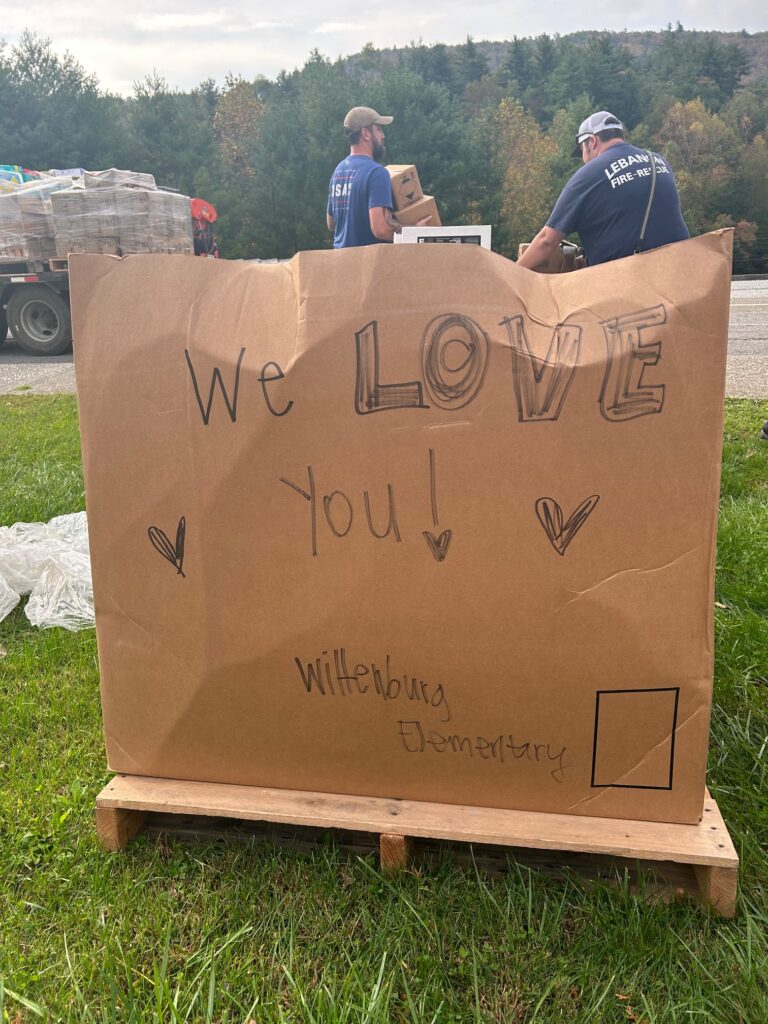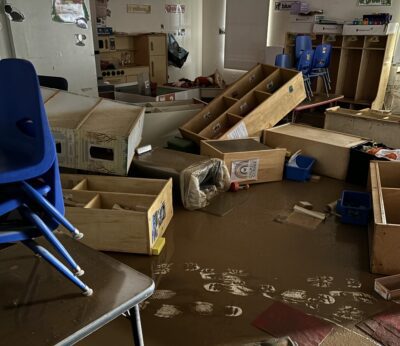|
|
And DPI shares guidance with districts on how to address infrastructure challenges locally as schools plan to reopen
When the legislature gathered in Raleigh for the first time after Hurricane Helene, legislators from the counties included in the disaster relief declaration shared their experiences, stories, and observations in addition to passing a $273 million relief bill.
The NC Tribune reported, “Senate Deputy President Pro Tem Ralph Hise, R-Mitchell, teared up as he talked about the situation in the Spruce Pine area.”
“The water system for the entire county [and both] towns is gone,” Hise said. “It does not exist, and it’s unsalvageable.”
Just after the storm, in the face of destruction that is hard to imagine or describe, the leadership team of Mitchell County Schools met, and led by Superintendent Chad Calhoun, they came up with a plan of action to guide the district’s moving forward given the unprecedented crisis.
“That’s genius,” says Deputy Superintendent of the N.C. Department of Public Instruction Jeremy Gibbs. “You all nailed it.”
The plan is already being iterated in other districts.
The plan of action
The Mitchell County Schools plan of action includes three phases in the journey to bring kids back to school: survival, recovery, return.
In the first week, the plan was executed by the central office team. In the second week, principals were brought in to assist in execution.
Six teams have been organized to support the execution of the plan: child care, finance, wellbeing/mental health, food assistance, communications, and having an ongoing voice at the table on safety and aid.
Survival
Phase 1 was survival, which included locating the families of students and educators, safety, basic needs, ensuring supplies of food and fuel, and finding volunteers.
The district was assisted in search and rescue by the Virginia Task Force 2 (VATF2).
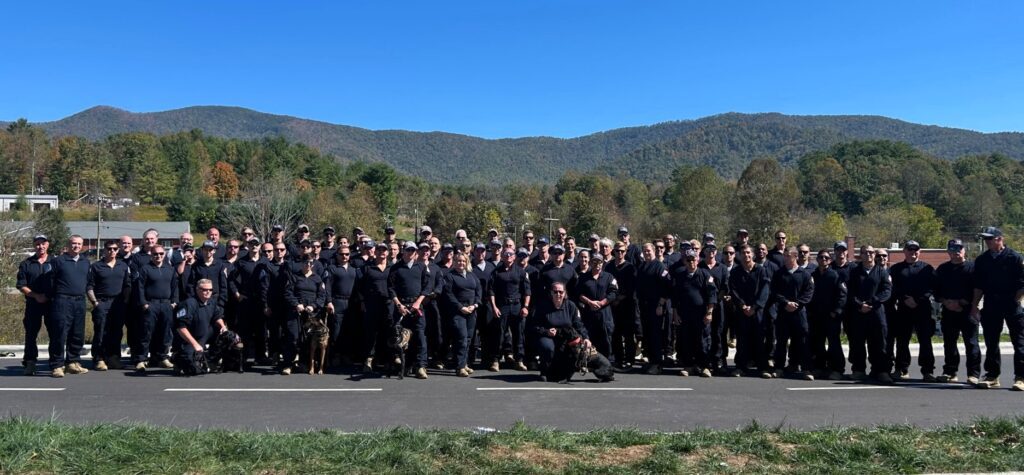
VATF2 slept in classrooms and set up showers on the playground.
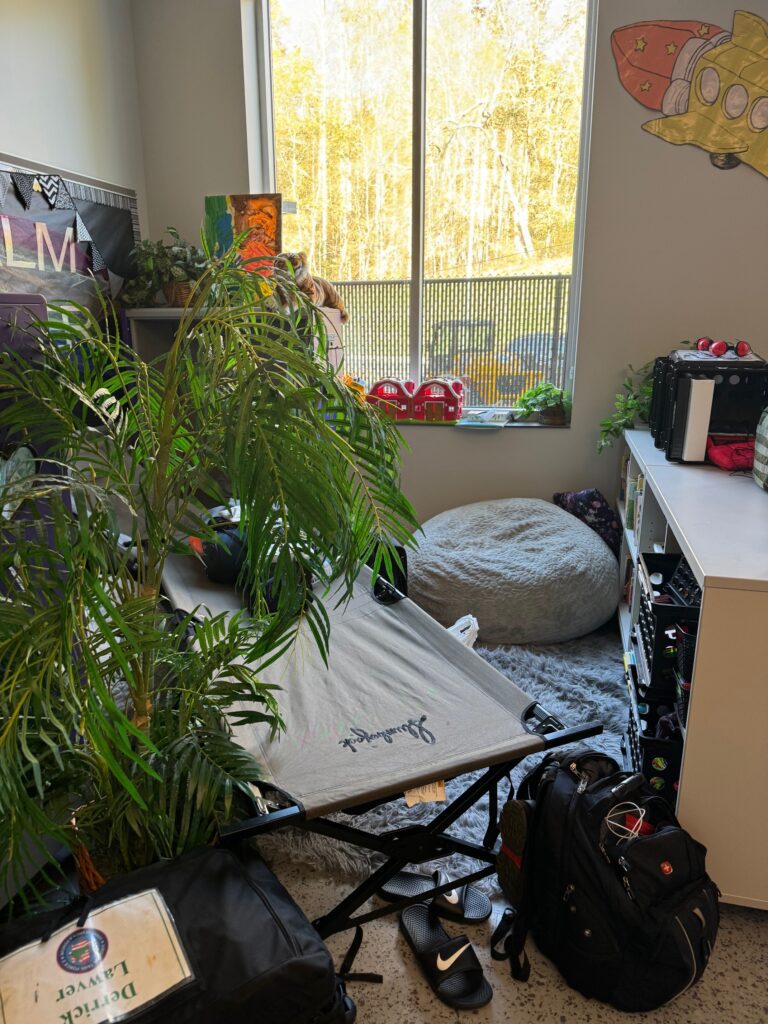

Loss is layering the logistical challenges the district collectively faces. Teachers had to hike into areas to find students they hadn’t had contact with, carrying supplies with them.
“We had to make sure we had accounted for every child,” says Associate Superintendent Jennifer Gregory.
The main distribution site for supplies countywide was located at the “new school,” a school that serves elementary and middle school students that opened in August.
Educators organized all of the supplies inside the school.
“We had a great system,” says Gregory. “People pulled up, they told volunteers what they needed, they would get the goods and run it back to the car.”
Recovery
In phase 2, the district is conducting an ongoing assessment of needs, organizing volunteers, meeting with staff, assessing and addressing mental health needs of both students and educators, and developing a plan to return kids to school.
As the district moves closer to bringing students back to school, deliveries are now being sent to an old Roses store, and supplies at the new school are being moved into a distribution center and warehouse — both in older school buildings that were not in use. Educators are in charge of all three locations.
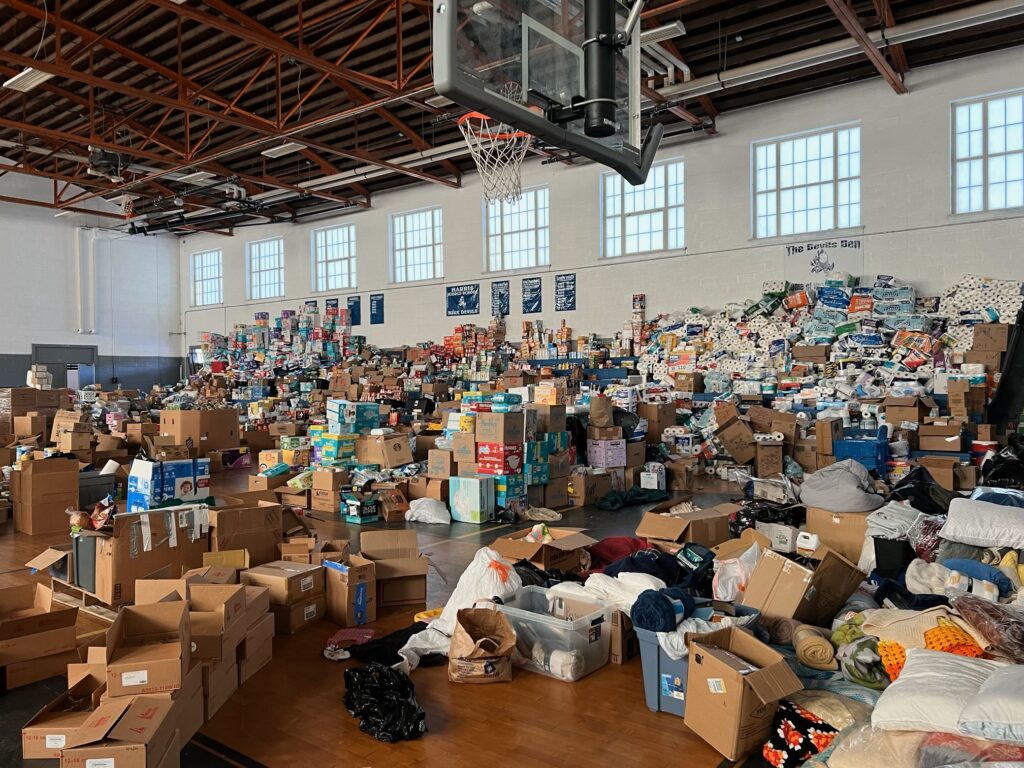
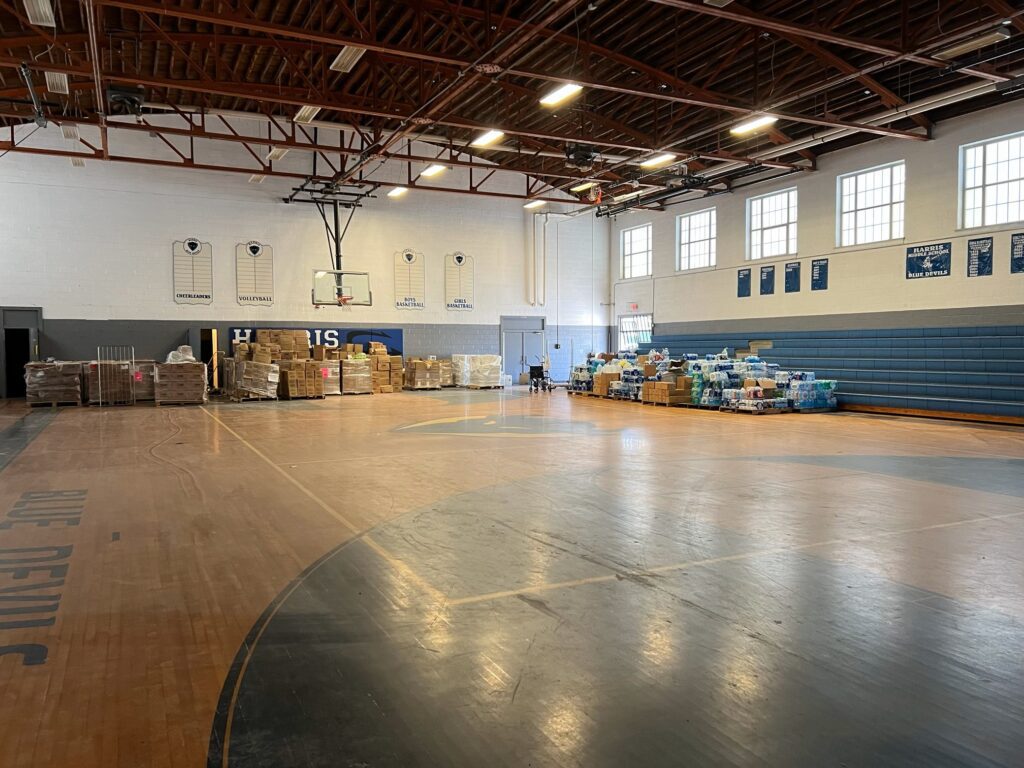
Whitney Ledford is usually an eighth grade social studies teacher at Mitchell Middle School.
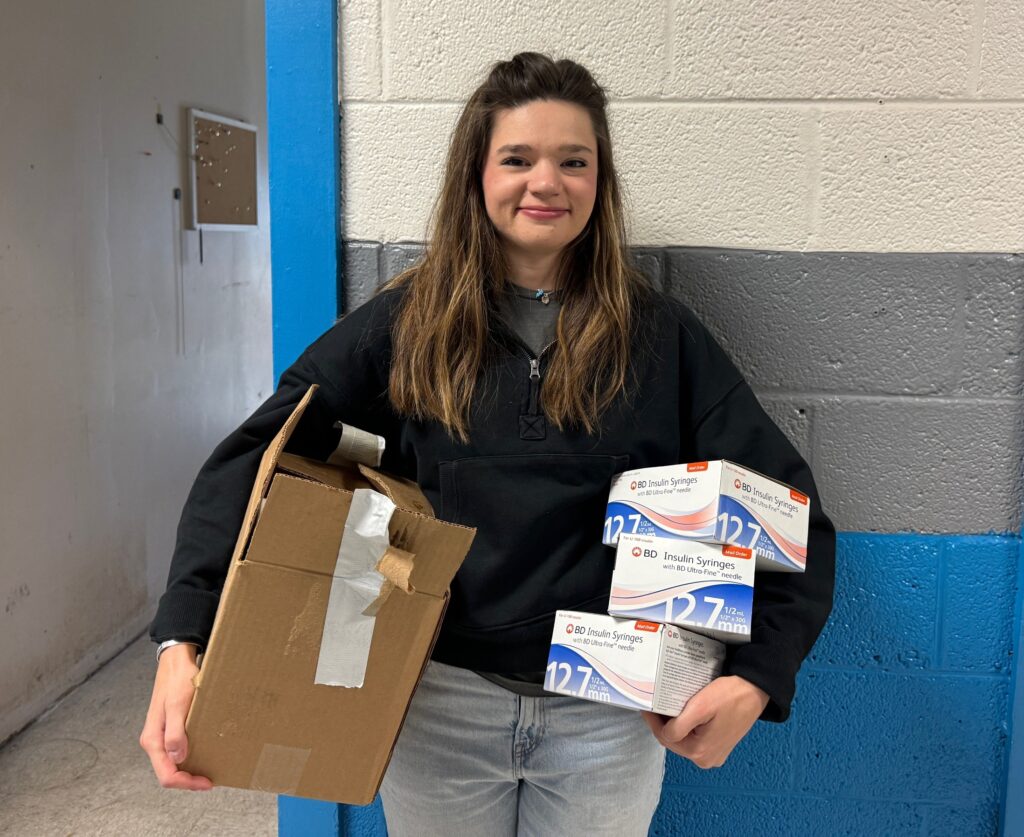
This week, she has been in charge of organizing the distribution center. Supplies from the new school were brought to the center and placed in the gym — that’s the before photo above. In one day, Ledford and a team of volunteers moved and organized the supplies into former classrooms. Diapers and wipes are in one, formula is in another, toilet paper and towels, food, water, etc.
Along the way, Ledford also had to learn how to drive and use a forklift.
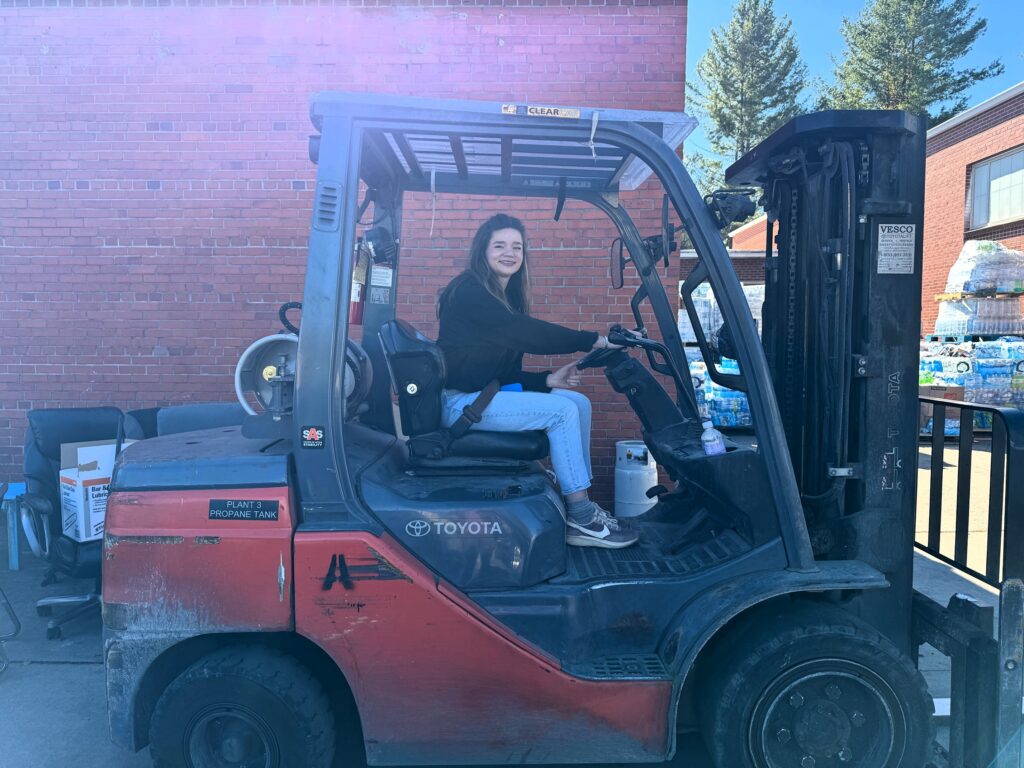
Once cleared, the schools will have to be professionally cleaned ahead of bringing students and educators back.
“The staff has worked seven days a weeks since the storm,” says Gregory.
Compassion fatigue happens to people in helping professions, like teaching, as they serve those experiencing extreme stress and trauma. In this case, the educators are experiencing the extreme stress and trauma themselves and working to support their students and communities in distress.
The district already has planned to bring in support for educators, and Gregory says, “of course we will continue to focus on mental health as we return.”
Return
As the district prepares for phase 3, it is addressing challenges to water, sewer, and transportation infrastructure that have to be addressed to open schools while also preparing for the additional mental health and other assistance families will need.
Last week DPI and the N.C. Department of Health and Human Services worked together to share guidance with districts on how to assess when to reopen.
“These kids have got to get back to school,” says Gregory. Many in the county still don’t have access to power and water at home.
Assistant Superintendent Kevin Huskins says the district may have to utilize drop off points and pickup locations to get students back to school sooner rather than later.
While these leaders figure out how to open schools, learning exploration kits are being created this week for the first time. K-5 students will come to their school weekly on Tuesdays to pick up their kits, also giving the district an opportunity to connect with families. Literacy and math activities are included, and the Penland School of Craft partnered with the district to include an art activity as well.
High schoolers will be invited to come to central office to work on FAFSA, college applications, and scholarships. And varsity athletics will start up this week to give students a “ray of hope,” according to Huskins, an announcement he said garnered a standing ovation.
P.S.
When VATF2 moved on to their next crisis, they signed teachers t-shirts.
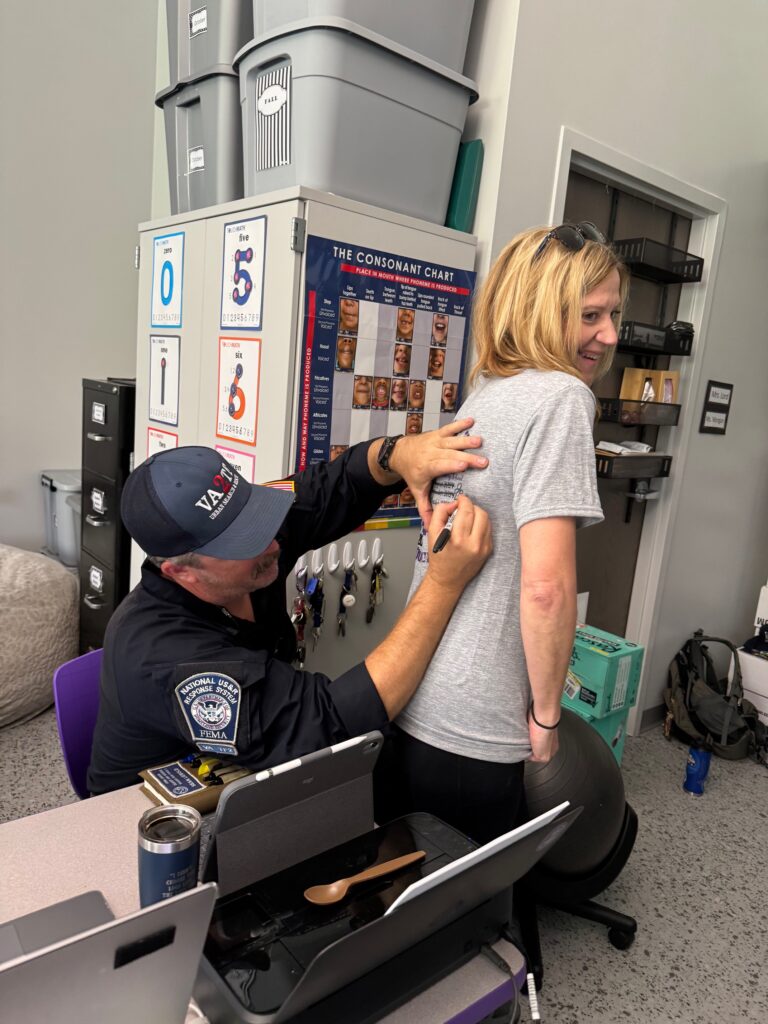
They left notes on the whiteboards in the classrooms they had slept in.


“We all cried when they left,” says Gregory.
The district also extends a thank you to Whittenburg Elementary in Alexander County Schools for sending love. #MitchellStrong indeed.
